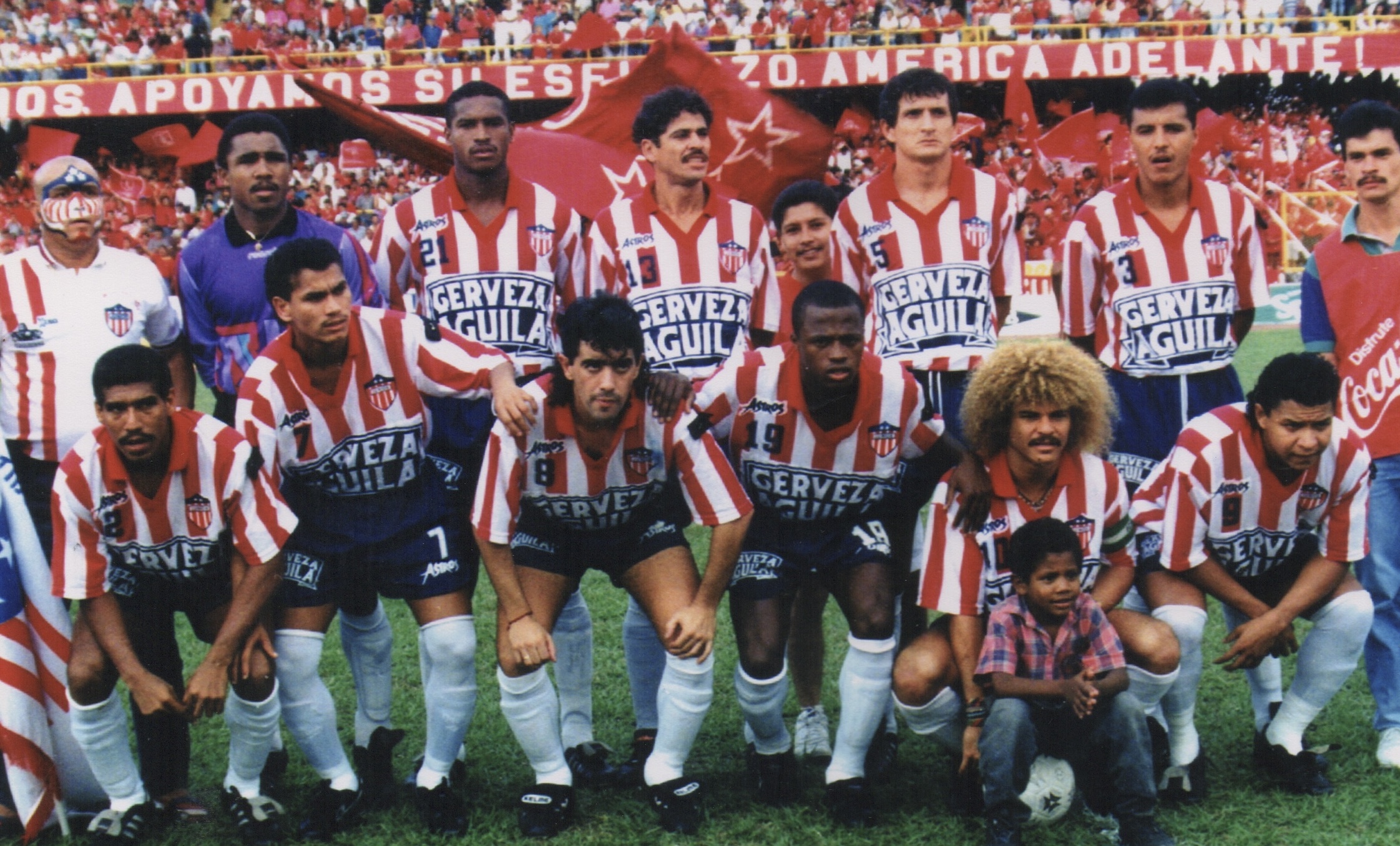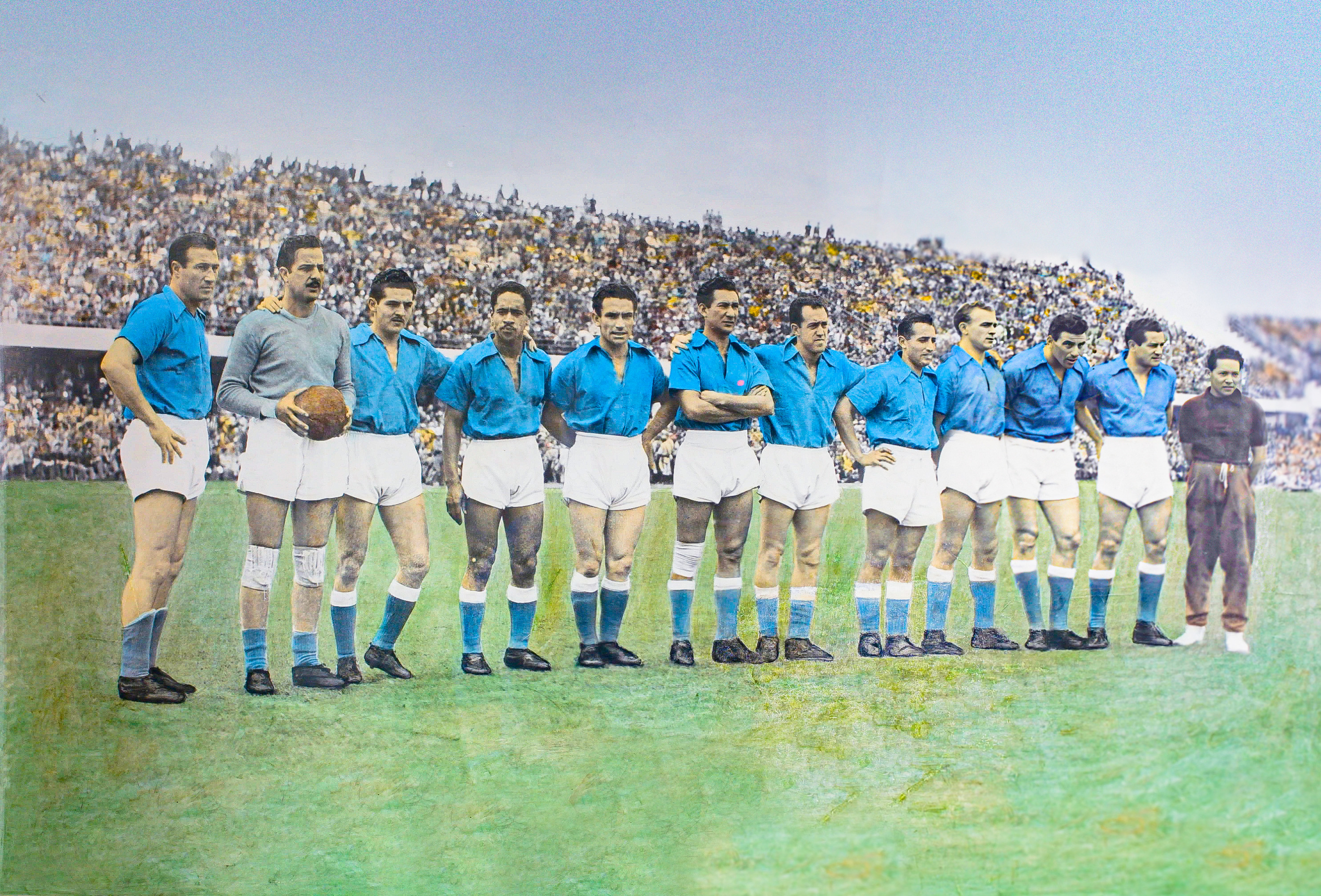Fifty canonical teams of Colombian professional football

The reason is unclear, and specialists would be wise to establish it, but if anything characterizes football fans, it's their fixation on rankings. However, most of them end up being drawn up arbitrarily and tainted by the deep biases inherent to the passion of the person who creates them.
But this isn't the case with the book "The 50 Best Teams in the History of Colombian Professional Soccer," recently released under the Aguilar label by journalist and soccer fanatic Mauricio Silva Guzmán. He relied on rigorous research and statistical compilation by fellow fan Felipe Valderrama. The teams included in the book weren't chosen by Silva; they are the result of a survey of the country's fifty most renowned sports journalists.
The book has the merit of going beyond statistics to provide stories—both luminous and obscure—until now unknown, surrounding the most memorable teams in our soccer, especially those assembled thanks to the liquidity enjoyed by most of the Dimayor teams in the 1980s and 1990s, whose illicit origins are now a historical and judicial truth. It's not just the data, it's also the narratives, to use a contemporary term. And each memorable team—El Dorado's Millonarios, Cali's Libertadores runner-up, Ochoa's América, Maturana's Nacional, and the 'puros criollos'—in addition to sporting feats, titles, goals, and plays, has left a "tale" in the memory of fans. A great merit of this work is that it translates from the informal conversation of fans, usually over drinks, onto paper these stories that are the intangible heritage of the soccer nation.
Federico Arango, opinion editor of this newspaper and also a fan and connoisseur of local football, spoke with the author about a book that will be the starting point for countless football debates.
Why 50 teams? Because it's a round number. More than 50 would be a lot, and less than 50 would be a little.
When did the Top 50 Teams project begin, and why did you decide to use a press survey to determine the final list? It started in January 2023, just as we finished the book The Best Team in the World. In that research, we found incredible stories about teams from the El Dorado era. So, I told Felipe Valderrama—the tremendous researcher I've been working with for years—that the new book was The 50 Best Teams in the History of Colombian Professional Football (FPC), which should be structured like that, just as it came out, but that we shouldn't define the list; rather, it should come from a survey of the 50 most influential sports journalists in the country.

Nacional, Colombia's first Copa Libertadores champion in 1989. Photo: Book "The 50 Best Teams in the History of the FPC."
No. I stuck to the survey results. In fact, I'm convinced the list is accurate. I wrote the 50 stories with complete conviction.
Can you tell us which teams received the most votes? Of course, there were 13 teams with 50 votes, that is, unanimous: Millos from 61 to 64; Cali from 65 to 70; Santa Fe from 71 to 75; Millonarios from 72 to 78; Cali from 77 to 79; América from 82 to 87; Cali from 85 to 87; Millonarios from 87 to 89; Nacional from 89 to 91; Junior from 93 to 95; Caldas from 2003 to 2004; Santa Fe from 2012 to 2016 and Nacional from 2012 to 2017. Then, with 49 votes, there were the teams I just named, plus Santa Fe from 48 to 52; Millos from 49 to 53; DIM from 54 to 57; Nacional from 76 to 81; Junior from 1977 to 1980; América from 1990 to 1993; Cali from 1998 to 1999; América from 2000 to 2003; and DIM from 2002 to 2004.

Junior from 1993, with the magic of Valderrama and goals from Valenciano and Guerrero. Photo: Book "The 50 Best Teams in the History of the Spanish Football Team."
Exactly. The tabulation showed that 41 teams received 40 or more votes. That means that more than 80 percent of the teams were unobjectionable to the voting journalists. Then there were 20 percent of teams that fought to get in and out. There were teams with a lot of votes that were left off the list.
Which is it? Santa Fe in 1966, with 28 votes, was left out. Then, DIM in 1993, Chicó in 2008, and Cali in 2015 were also left out with 26 votes.
Would you have liked other teams to have entered? Which ones? Yes, I would have liked to see Bucaramanga from '60, Millos from '84 and '85, and Junior from '91 stay. None of those teams won the league, but they made a lasting impression on their fans and had exceptional stars.
And in your opinion, which teams could have been left off the final list? For my taste, I think the 2006 Deportivo Pasto or the 2017 Millos teams might not have qualified. But it's good that they're there. They have plenty of merit.
It's easy to write about the teams you saw. How did you do with the ones you didn't see? Be very rigorous with your research. Felipe's investigative work was impeccable and revealed the true dimensions of our FPC's long-standing and large-scale formations.

América de Cali, led by Ochoa Uribe (1987), with Gareca, Falcioni, Willington, Battaglia, and others. Photo: Book "The 50 Best Teams in the History of the Spanish Football Team."
Nothing but the fact that the story would be incomplete, and it would simply be foolish not to tell it. Drug trafficking in Nacional, Millonarios, and América during the 1980s and 1990s made a number of titles possible. América de Cali, to mention the most telling case, won 12 titles when it was directed and managed by the Rodríguez Orejuela brothers, bosses of the Cali cartel. It's impossible to omit that from the story. These were projects financed by drug trafficking. Nothing more. The book even has some inside information about it.
Tell us a story, for now. Coach Julio Comesaña told me the truth about how El 'Pibe' Valderrama came to Junior. It was thanks to him, in a meeting in Cali, asking Miguel Rodríguez Orejuela not to touch the national team's number 10, as he knew they wanted him for América. The Uruguayan told him he wanted him for Junior and, in exchange, he would give him Javier Ferreira. And the boss agreed.
There's a clear narrative style here: all the chronicles in this book tell how each of the 50 teams was assembled and dismantled. Was that their purpose? Not really. That idea came from my friend Álvaro Andrés Cuéllar, the first reader of these texts. He made me see that it was crucial for every team, without exception, to talk about how these great projects were built and how they fell apart. Listing the achievements and titles of each team was taken for granted, but I understood that it was key to apply the formula of "birth, brilliance, and death."
Did any team make the list more for its results than for how it played? The vast majority are focused on their results. I think the press gave too much importance to the titles.
And along those lines, do you think a team absolutely needs a title to be labeled a "team of the era"? Many didn't need a title to go down in history. In fact, extraordinary teams that marked an era are included in the book: Cali, Boca Juniors, and Cúcuta del Dorado; América de Pedernera in '60; Kokoriko Tolima in '81 and '82; and Cali from '85 to '87, with Redín and Valderrama. Unforgettable.

Millonarios of 1951, the 'Blue Ballet', with Cozzi, Di Stéfano, Rossi, Pedernera, among others. Photo: BOOK 'THE 50 BEST TEAMS IN THE HISTORY OF THE FPC'.
I believe that, in 470 pages and just over 250 photos, we leave a good testament to what our football has been, the styles of play, the teams' heroic deeds; the stature of its stars, how they were built and broken ; the anecdotes on and off the pitch; the rivalries, the fans, and the evolution of our tournament. That's precisely why we wrote this book chronologically, because it was important to chronicle the changes each era brought to our FPC. A very crazy League, too.
You've always said our football is a joke. Do you still see the FPC that way? I see it with even more amazement. Yes, it's been a blast, but it's also achieved impressive things. On the one hand, the Colombian championship is one of the tournaments with the most formats in the history of football: the best round-robin; the winner of the Apertura vs. the winner of the Finalización; triangular; quadrangular; hexagonal; octagonal; two-point bonus; 1.75 points; one point; half a point; 0.25 points. And, on the other hand, much to our chagrin, the FPC has written magnificent chapters, several of them of the highest level.
Did you identify anything wrong that has always been repeated? Yes. It's always been the case that Colombian clubs' worst enemy in international tournaments is the Colombian tournament itself. Teams haven't been able to perform on both fronts because managers throughout the ages have packed the year with games. And always, always, our clubs have been exhausted.
It has always been the case that the worst enemy of Colombian clubs in international tournaments is the Colombian tournament itself.
I think it's very common for us, after turning 40, to grumble and say, "Those guys back then were great!" And I think that's exactly what prevents us from taking stock of the present.
In your opinion, and take your time, who are the 20 most important foreign players who have made it big in the FPC? I'm sure I'll leave several out, but, due to their importance, greatness and what they did on our fields: Pedernera, Di Stéfano, Rossi, Pontoni, Rial, Charro Moreno, Corbatta, Dida, El Mago Loayza, Sekularac, Verón, Scotta, Cueto, Funes, Cabañas, Falcioni, Goycochea, El Calvo Pérez, Viera and Armani.
And what about the Colombians? I'll also leave out a lot, but I'll risk saying these: Caimán Sánchez, Maravilla Gamboa, Willington, Cañón, Arboleda, Teto Díaz, Iguarán, El Pibe Valderrama, Freddy Rincón, Higuita, La Gambeta Estrada, El Tren Valencia, Miguel Calero, El Tino Asprilla, El Gordo Valenciano, Óscar Córdoba, Aristizabal, Teo Gutiérrez, Juanfer Quintero and Lucho Díaz.
What would you consider to be your top five FPC teams? I'll tell you chronologically: Millos from 49 to 53; América from 82 to 87; Nacional from 89 to 91; Once Caldas from 2003 to 2004; and Nacional from 2012 to 2017. Among them is the greatest.
eltiempo





